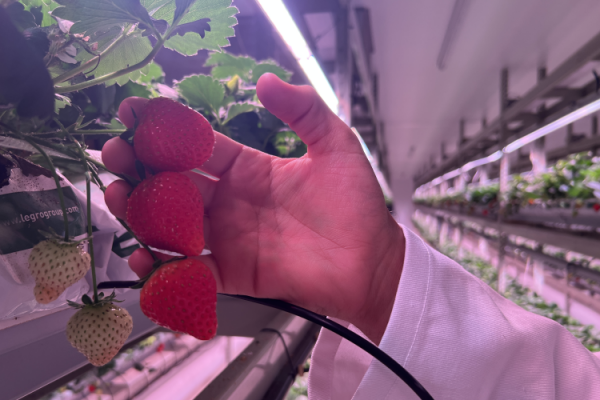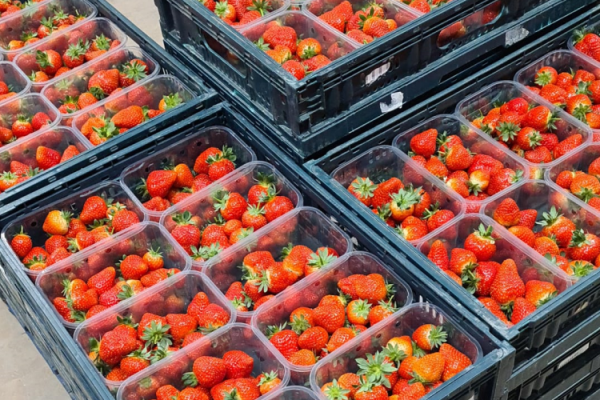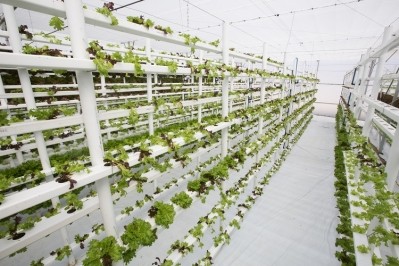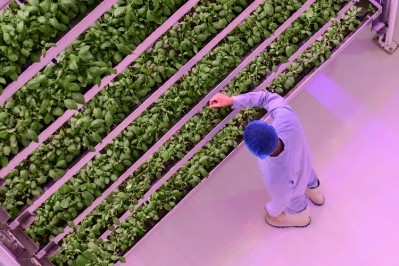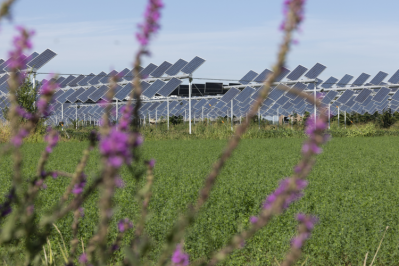‘We tackle challenges surrounding energy head-on’: How FlexFarming is doing vertical farming differently
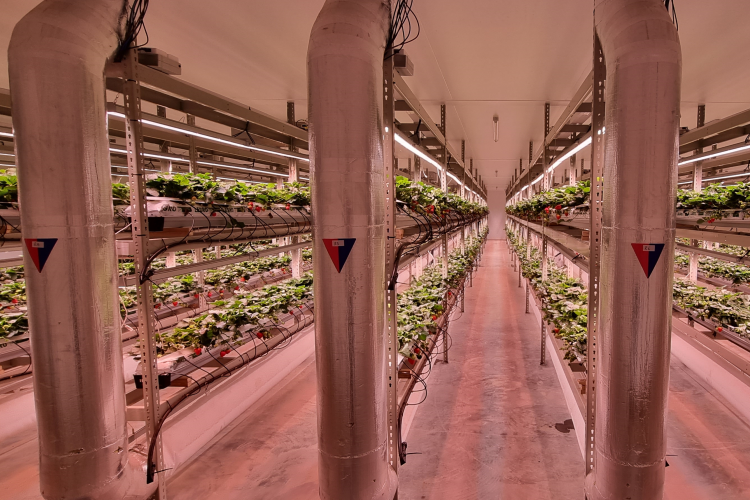
Proponents of vertical farming claim that it can help solve some of the challenges facing today’s food system. By bringing year-round food production closer to consumers, vertical farms can shorten the food chain and ensure food security. The controlled environment means that chemical inputs are unnecessary. And vertical farms claim to have a much lower footprint on a number of environmental measures.
“Whilst we’re able to achieve year-round production using Controlled Environment Agriculture (CEA) processes and indoor vertical farming, there are many additional benefits to this modern method of cultivation. The FlexFarming product guarantees the availability and consistent quality of crop, all whilst being more sustainable – using 90% less land, 95% less water, minimising the use of agrochemicals and reducing waste. It is the complete control over the environment that allows us to replicate the ideal growing conditions for our crops to thrive,” FlexFarming CEO Ahmad Mohseni told FoodNavigator.
Nevertheless, the sector does face some significant structural challenges. A large amount of start-up capital is needed to set up indoor farming facilities and the slate of technology required is expensive to install and operate. Perhaps the greatest issue the burgeoning CEA industry faces is energy consumption.
Unlive traditional agriculture, which is powered directly b the sun, indoor farms are dependent on LED lighting. Energy costs run high, placing profitability under pressure and potentially undermining environmental benefits if producers rely on fossil-fuel powered electricity sources.
FlexFarming’s ‘Farm as Battery’ concept
With this in mind, FlexFarm has developed a unique approach to energy that puts sustainability at the forefront and seeks to tackle the high CapEx and OpEx costs associated with indoor farming.
Mohseni, himself a smart energy entrepreneur and CEO of Brits Energy, said that when FlexFarming was developing its approach to indoor agriculture, energy consumption was central to its thinking from the get-go.
“Our approach to vertical farming tackles the challenges surrounding energy head-on from the off set, making it a unique model compared to others in the industry,” he told us.
FlexFarm’s solution identifies flexible energy demand opportunities and uses them to enhance the resource efficiency of onsite energy systems by understanding the flexibility the crop has in its growth cycle.
“We’ve introduced Farm as a Battery (FAB), an integrated technological development that maximises the benefits of precision farming by advancing or slowing crop growth, managed by the energy input. It works to identify flexible demand opportunities and utilises them to increase the effective usage factor of local energy systems, acting as a bridge to integrate with this flexible demand.
“With the flexibility to reduce or increase demand as and when required, and the use of a renewable energy tariff, we can improve efficiency and help to reduce energy consumption within an environment that is heavily reliant on power.”
FlexFarm is currently working on finalising its lifecycle data, but Mohseni is confident the comparison will be favourable. “We’re striving to improve all aspects of sustainability compared to produce that is imported or grown in polytunnels.”
The company, which is currently focusing on strawberries, is working towards achieving a net zero strawberry production system to reduce its environmental impact. The team is currently reducing carbon emissions by using renewable energy sources and exploring additional ways to offset its carbon footprint going forward.
Building scale for year-round British strawberries
The Somerset-based vertical farm company has just harvested its first crop of Class 1 strawberries from its 500sqm, 10-tonne strawberry production facility, which is recognised as one of Europe’s largest Controlled Environment Agriculture (CEA) vertical farms.
Founded in 2021 following successful early-stage trials and £2.5m funding from innovate UK to build its first farm and prove its concept, FlexFarming aims to grow and supply British strawberries to the mainstream UK market all year round. The company isn’t competing against in-season British strawberries as its product isn’t currently cost-competitive. However, it sees an important opportunity to boost local supplies and shorten the supply chain.
“We understand the challenges associated with the current supply methods, which is why we’re working on a solution which addresses the supply issues. With CEA, we can decouple the production from the season and shorten the supply chain,” the food tech entrepreneur explained.
Having reaped the first harvest, FlexFarming is now turning its attention to building scale and tackling what Mohseni described as ‘the key challenge’ facing the CEA sector: ‘achieving financial viability and producing a product which is affordable for the mainstream market’.
“Our 500sqm Somerset-based facility supports 10-tonnes of production capacity, built in a way that allows maximum flexibility for changes in design. Marking just the start of the journey, the small-scale pilot production farm allows us to test what’s working and what isn’t, providing an opportunity to learn and adopt.
“All findings will be applied to our scaled-up 500-tonne production facility, in which we hope to introduce into the fold by 2025. With this, we’ll be able to prepare the solution for the next stage and replicate our operation anywhere in the world.”
